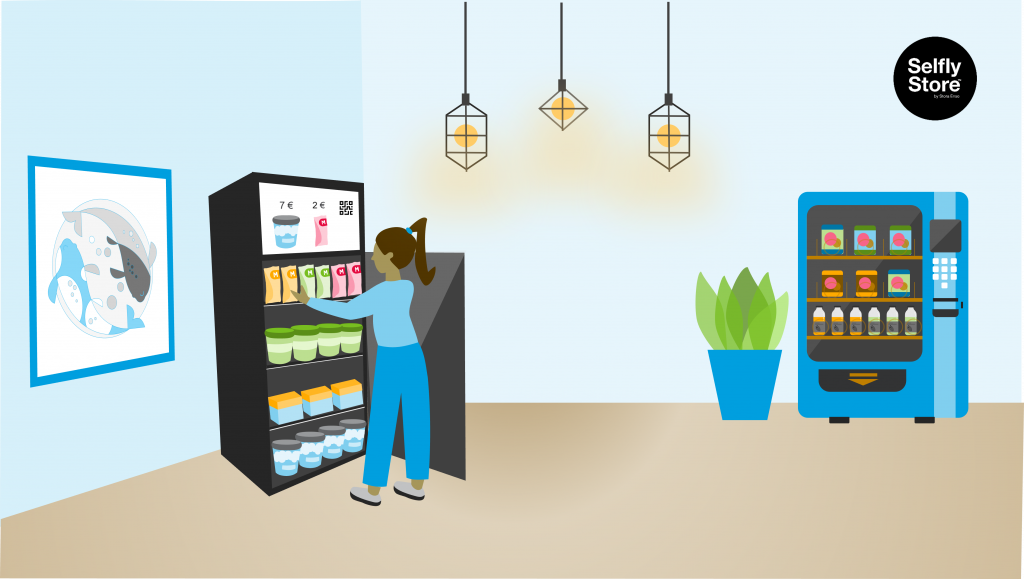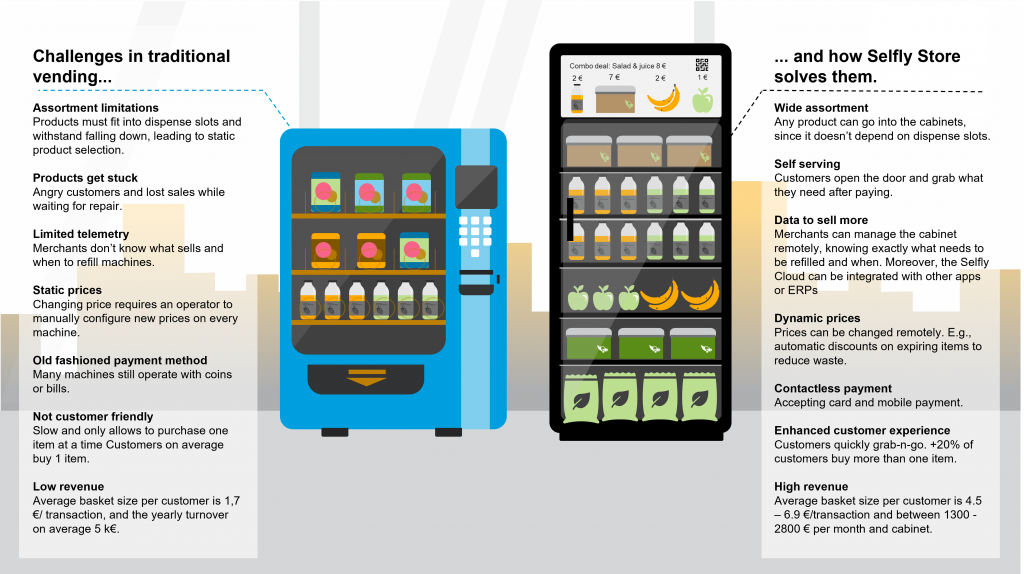The impact of technology and analytics on the vending industry
In previous blog posts we have talked about the challenges traditional vending machines face and the opportunities that intelligent vending offers. The vending industry has seen a remarkable transformation over time, fueled by technological progress and cutting-edge solutions. In this blog, we’ll discuss the role of the Internet of Things (IoT), analytics, and other technology developments in shaping the future of the vending industry. We’ll also explore how intelligent vending machines leverage these technologies to optimize inventory management, reduce waste, and personalize customer experiences. So, let’s forge ahead on this fascinating journey!

1. The role of IoT in vending
The Internet of Things (IoT) refers to the network of interconnected devices that communicate and exchange data with each other. In the vending industry, IoT has paved the way for remote monitoring, real-time inventory management, and predictive maintenance. IoT-enabled vending machines can send notifications to operators when stock levels are low, when maintenance is required, or when a machine is experiencing technical issues. IoT technologies most used in intelligent vending machines include RFID tags for item-level identification, smart scales on the shelves, and camera vision for product recognition and monitoring. This connectivity allows operators to make data-driven decisions and optimize their operations.
2. Harnessing analytics for smarter vending and increased revenue
Big data and analytics play a crucial role in the success of smart vending machines, helping to increase revenue. By analyzing data on sales, inventory levels, customer preferences, and trends, operators can optimize their product offerings, reduce waste, and make more informed decisions about pricing, promotions, and product assortment. For example, by identifying the best-selling products or the times of day when sales are highest, operators can adjust inventory levels and pricing strategies accordingly. Additionally, targeted promotions, such as discounts on slow-moving items or offering bundle deals, can encourage customers to make more purchases, ultimately boosting revenue. This data-driven approach to vending helps businesses stay competitive and meet evolving consumer needs.
3. Personalizing customer experiences
Technological advancements in the vending industry have also made it possible to offer personalized customer experiences. For instance, an intelligent vending machine can be integrated with a mobile app that features a loyalty program. When customers use the app to make a purchase or scan a QR code at the machine, the vending system can identify the customer and access their purchase history or preferences. Based on this information, the machine can then display tailored product recommendations, such as their favorite snacks or beverages, or suggest healthier alternatives that align with their dietary needs. This personalization not only improves the customer experience but also helps drive sales and customer loyalty by making the vending process more engaging and relevant to individual consumers.
4. Optimizing inventory management
Smart vending machines leverage technology and analytics to optimize inventory management. By analysing sales data and customer preferences, these machines can automatically adjust product assortment and stock levels to meet demand. This data-driven approach to inventory management helps minimize waste, reduce stockouts, and ensure that customers always find the products they want.
5. Reducing waste through dynamic pricing
Another significant benefit of technology and analytics in vending is the ability to implement dynamic pricing strategies. Smart vending machines can automatically adjust prices based on factors such as product expiration dates, promotional periods, or demand fluctuations. This dynamic pricing helps reduce waste by encouraging customers to purchase products nearing expiration and helps operators maximize revenue.
Conclusion
The impact of technology and analytics on the vending industry cannot be overstated. By leveraging IoT, data analysis, and other technological advancements, vending operators can optimize their operations, reduce waste, offer personalized experiences to their customers, and boost revenue. As the industry continues to evolve, embracing these cutting-edge solutions will be crucial for businesses to stay competitive and meet the ever-changing needs of consumers. In the next blog we will delve into how an smart vending business can be set up in a step-by-step guide.

